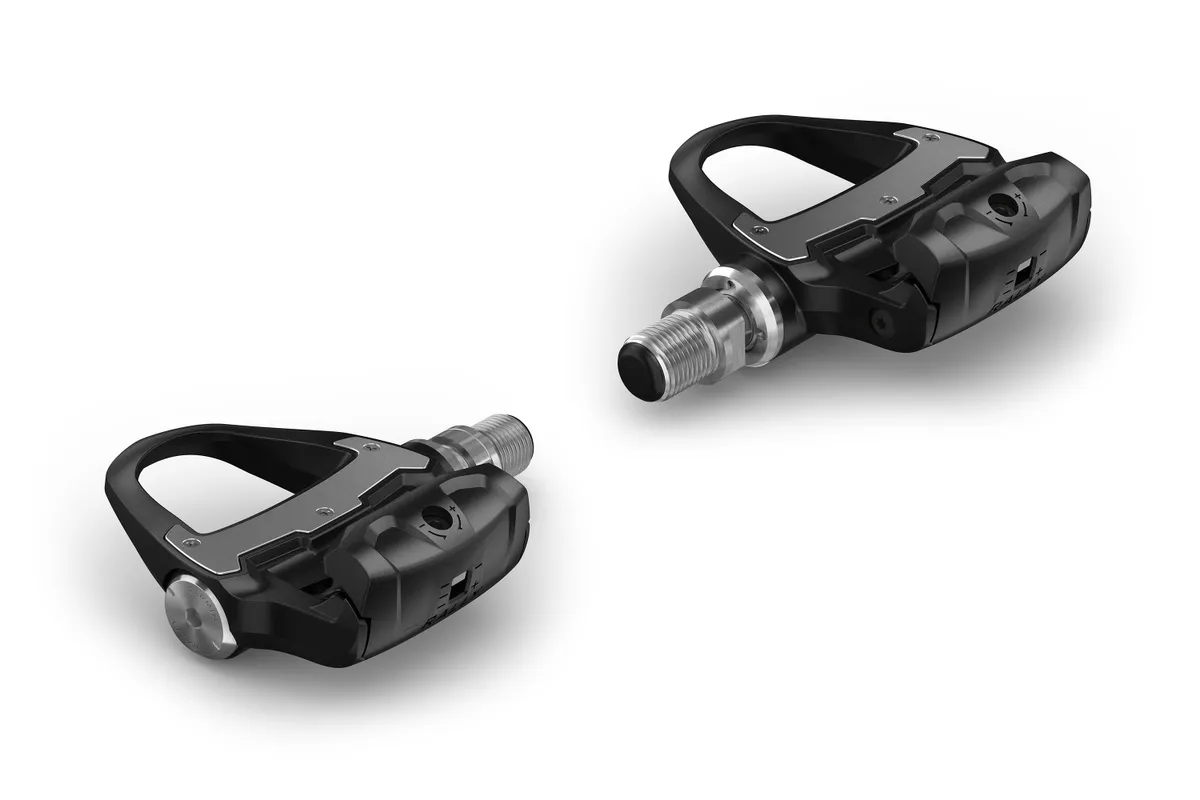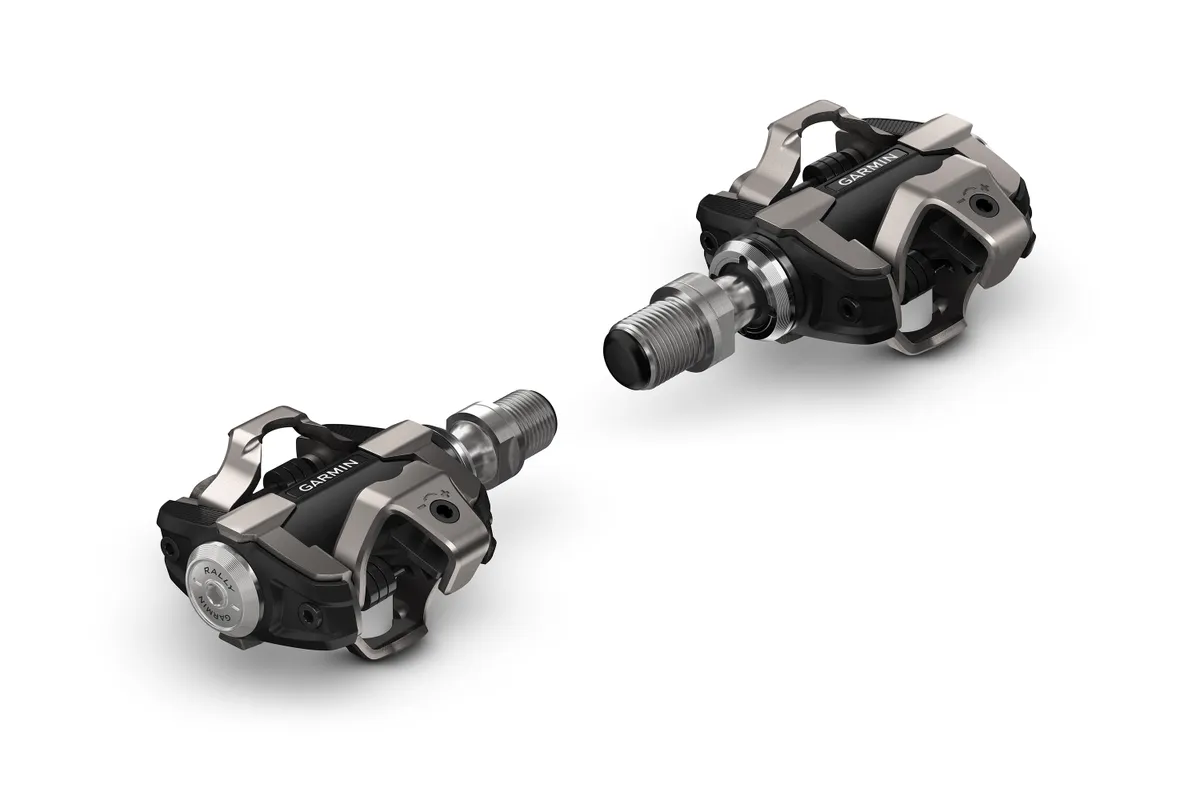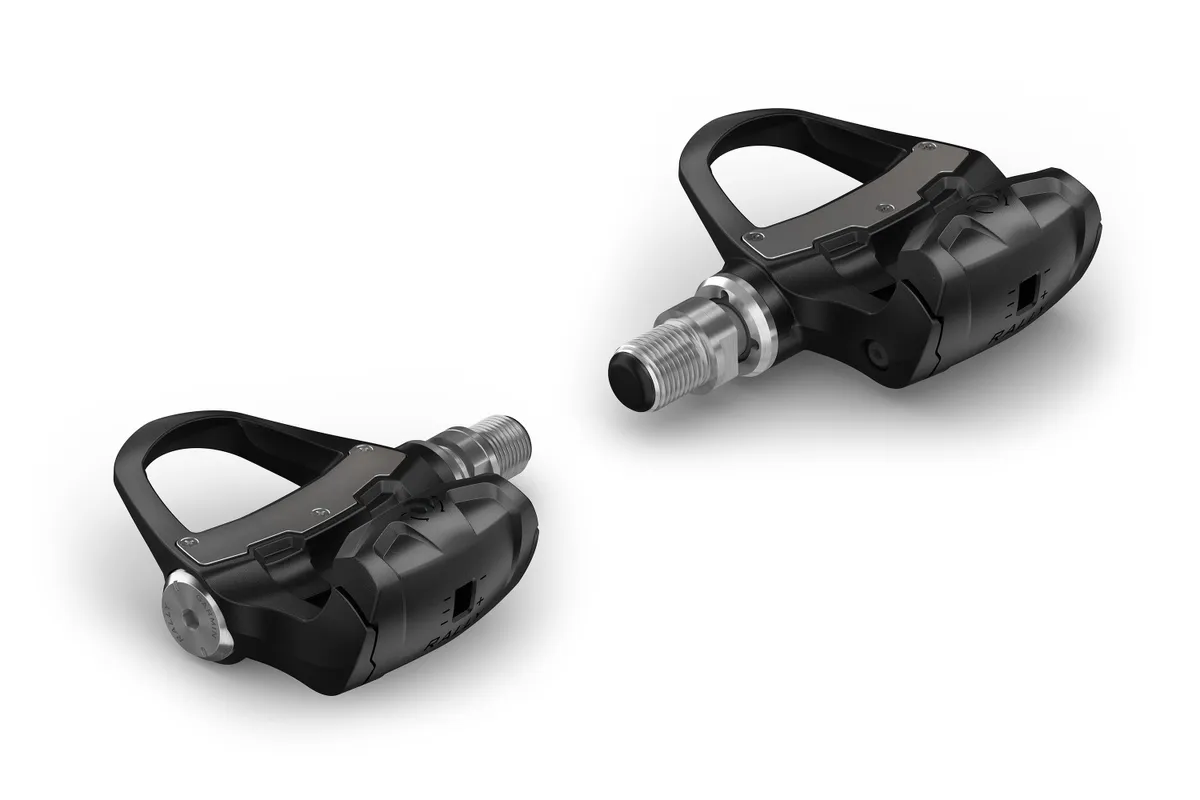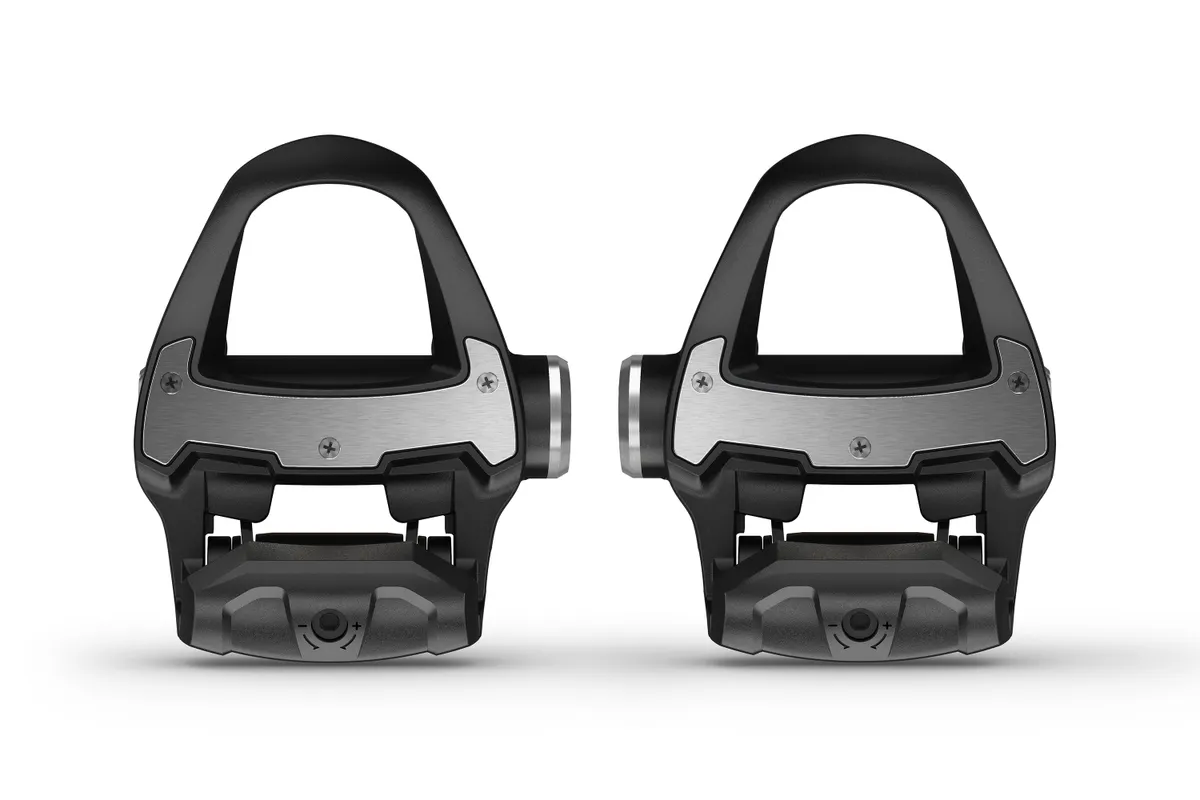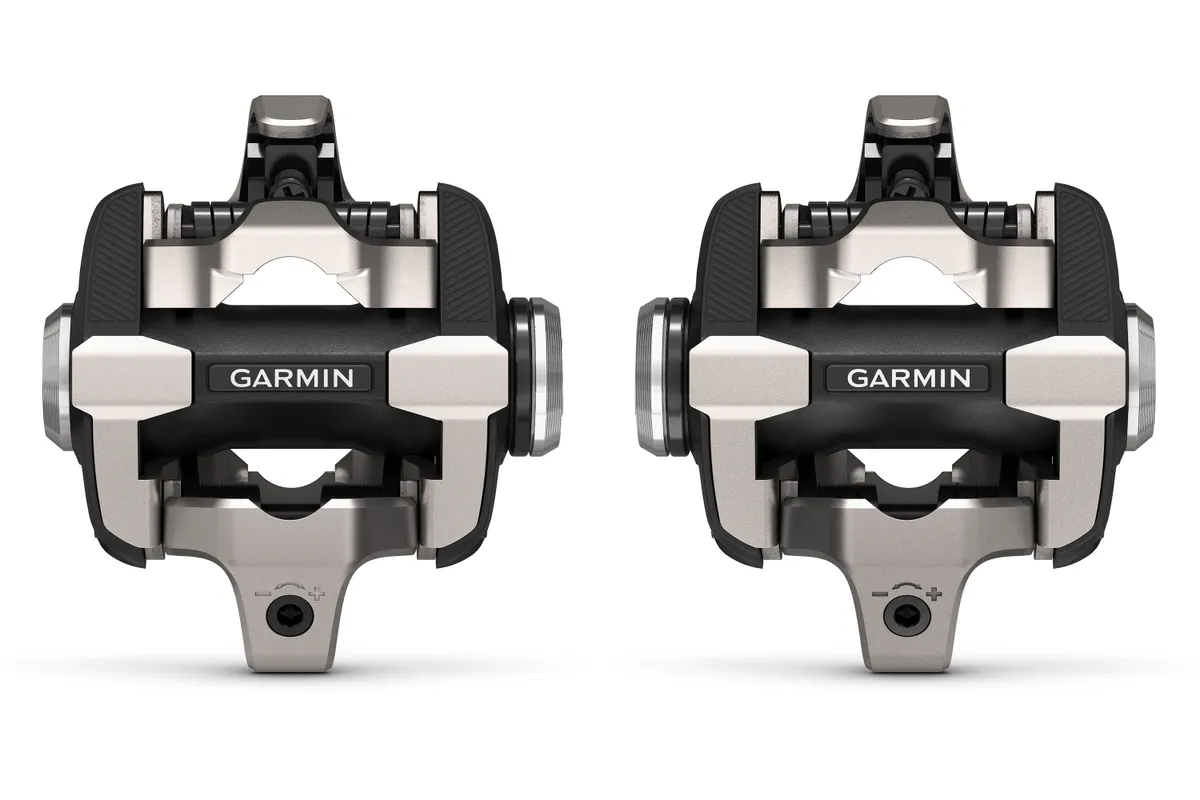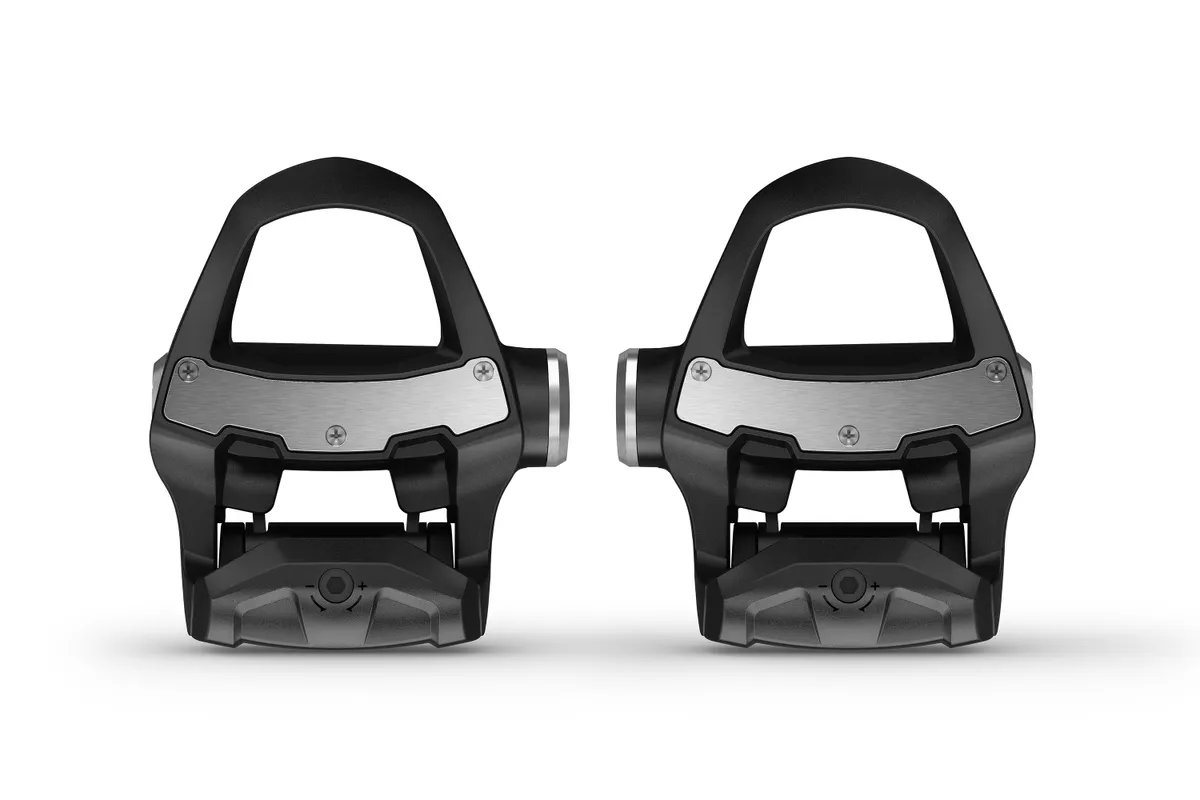The Garmin Rally power meter pedal system is the world’s first native SPD-SL power meter pedal, but it’s more of a pedal ecosystem that can be converted for use both on and off-road.
It’s also very user-friendly and offers accurate and reliable power data, making it a great option for cyclists who want to measure their efforts across multiple disciplines.
Garmin can arguably be credited with kick-starting the power meter pedals market, with its original Vector pedals, which launched back in 2013. The Rally represents the brand's fourth generation power meter pedal.
Crucially, for many devoted Shimano SPD-SL pedal fans, the Garmin Rally power meter pedal is the first to offer native Shimano SPD-SL cleat compatibility straight out of the box.
Garmin has gone a step further, though. Separate pedal body upgrade kits (dubbed ‘conversion kits’) enable the Rally pedal body to be swapped out for Look Keo (road) or Shimano SPD (off-road) cleat compatibility.
The Rally power meter pedals take much of what many loved about the Vector 3 power meter pedals, including reliable and accurate power measurement, clean aesthetics and user-friendliness, and adds Shimano SPD-SL and SPD cleat compatibility.
This makes it an ideal power meter for cyclists who are fussy about cleat choice or dabble in both road and off-road cycling.
Goodbye Vector, hello Rally
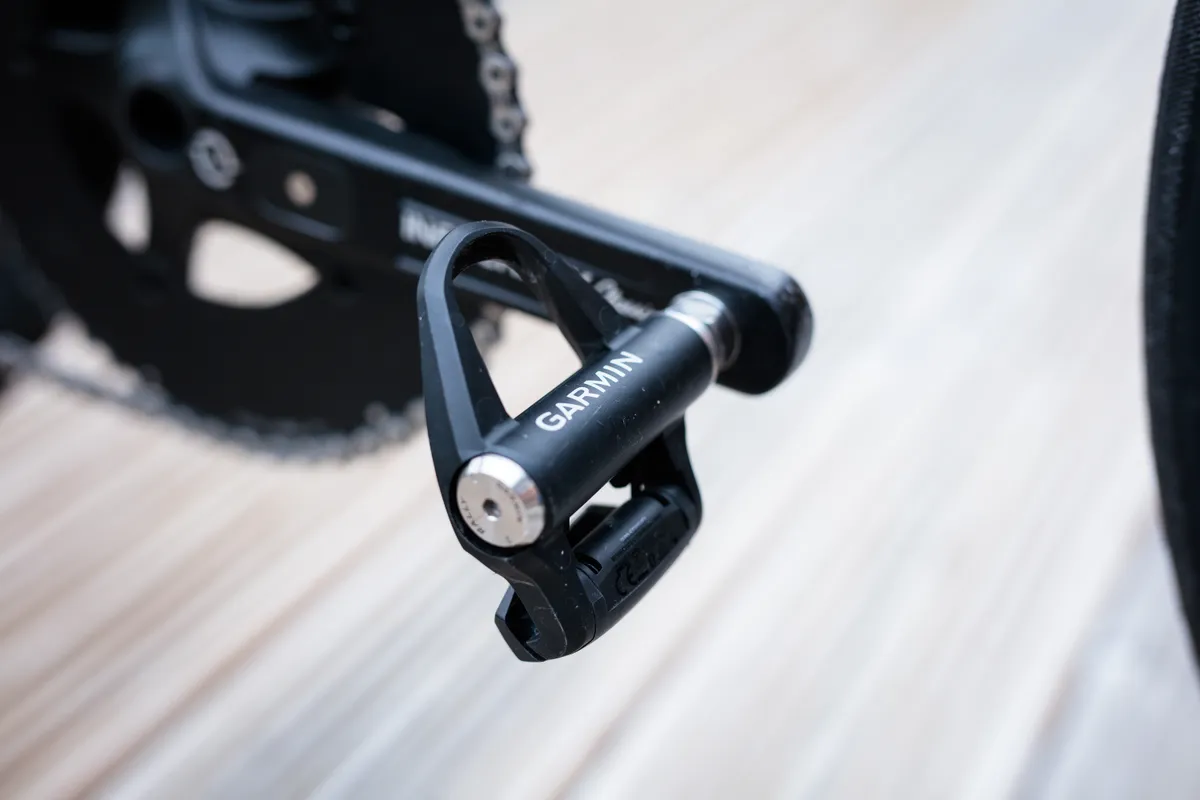
From the outside, the Rally pedals look almost identical to the outgoing Vector 3 pedals, so unboxing them does prompt the question why has Garmin abandoned the Vector name?
Garmin says the reason behind the change is because the Rally pedal system is no longer simply a power meter pedal for road cyclists, now that it caters for both on and off-road pedal systems. In simple terms, Garmin has eyes on the gravel and mountain bike markets.
Key to this is the availability of three different pedal body options and conversion kits that allow one pedal body to be swapped out for another using relatively basic tools (more on this later), to enable compatibility with different cleat types.
It also solves the key limitations of previous power meter pedals – limited pedal body and cleat compatibility.
Beyond that, much appears to have been carried over from Garmin’s Vector 3 power meter pedals. Aesthetically, this is no bad thing. The Vector 3 pedals were arguably the best looking power meter pedals on the market already, and the Rally pedals maintain their wonderfully normal looks.
Garmin Rally pedal options and pricing
Garmin Rally conversion kit options and pricing
- RS conversion kit – Shimano SPD-SL (road): £179.99 / €199.99 / $199.99
- RK conversion kit – Look Keo (road): £179.99 / €199.99 / $199.99
- XC conversion kit – Shimano SPD (off-road): £219.99 / €249.99 / $249.99
Compared to the Vector 3, which costs £849.99, the RRP has risen slightly. The Rally’s RRP also represents a hefty premium over its main competitor, Favero’s Assioma Duo power meter pedal, which is currently priced at £699 / €569.67 / $675 for the dual-sided version, and £449 / €445 / $433 for the single-sided version (the Assioma Uno).
The Assioma platform is, as things stand, only officially compatible with Look Keo (road) style cleats, though.
As with the Vector series, you can also buy a separate right-side Rally power meter pedal to upgrade your single-sided set to dual power measurement later on.
These cost £489.99 / €549.99 / $549.99 for the RS and RK road pedals and £529.99 / €599.99 / $599.99 for the XC off-road pedal.
Power meter pedal advantages and disadvantages
Power meter pedals have a number of potential advantages over power meter cranks.
Foremost is the ease with which they can typically be installed or removed from any bike. Second, they don’t tie you to a specific crank length or bottom bracket standard, which can be especially useful if you have multiple bikes.
The Rally power meters pedals, which are installed and removed with a standard 15mm pedal spanner, tick both of these boxes.
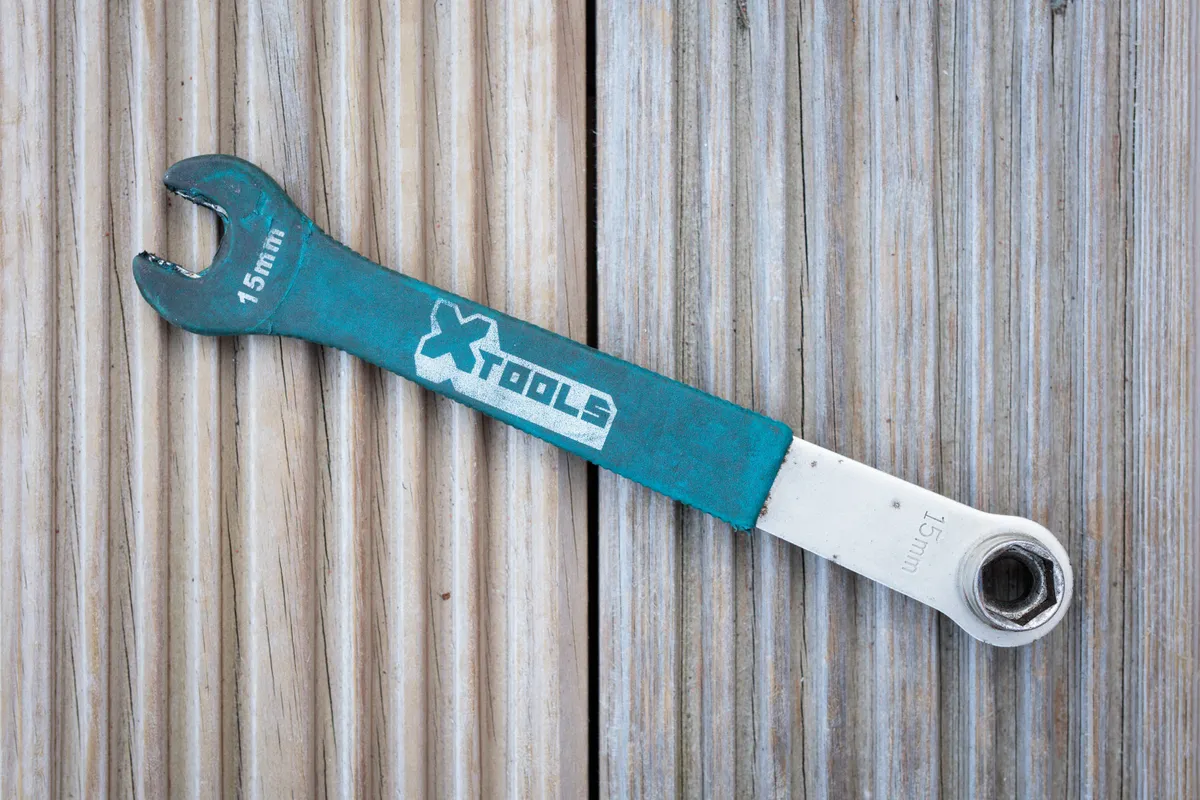
The most common disadvantage of power meter pedals has been that, unless you already used Look Keo style cleats, you may have needed to get used to a new pedal and cleat system.
Or, if you rode gravel bikes or mountain bikes, there simply weren't many dedicated options. The Rally range removes these limitations.
That aside, power meter pedals are still generally more exposed to knocks and crash damage than crank- or spider-based options – though the pedal body itself is replaceable, should you damage it.
They also typically have relatively shorter battery lives due to the physical space constraints of squeezing everything in or around a pedal spindle.
Garmin Rally RS200 power meters pedals in use
As already noted, installation is very easy – if you can install any other pedal, you can install these just as quickly.
Garmin includes a set of non-official SPD-SL cleats with 4.5 degrees of float, but I did the bulk of my testing with a set of genuine Shimano SPD-SL yellow cleats (which have 6 degrees of float) and didn’t experience any issues with clipping in or out, or with the cleats unclipping unexpectedly while riding.
The Rally RS200 pedals use a single CR1/3N coin cell battery in each pedal. Garmin said it decided to stick with user replaceable, disposable coin cell batteries (as opposed to a permanent, rechargeable battery) because they consider them to offer better battery life and usability.
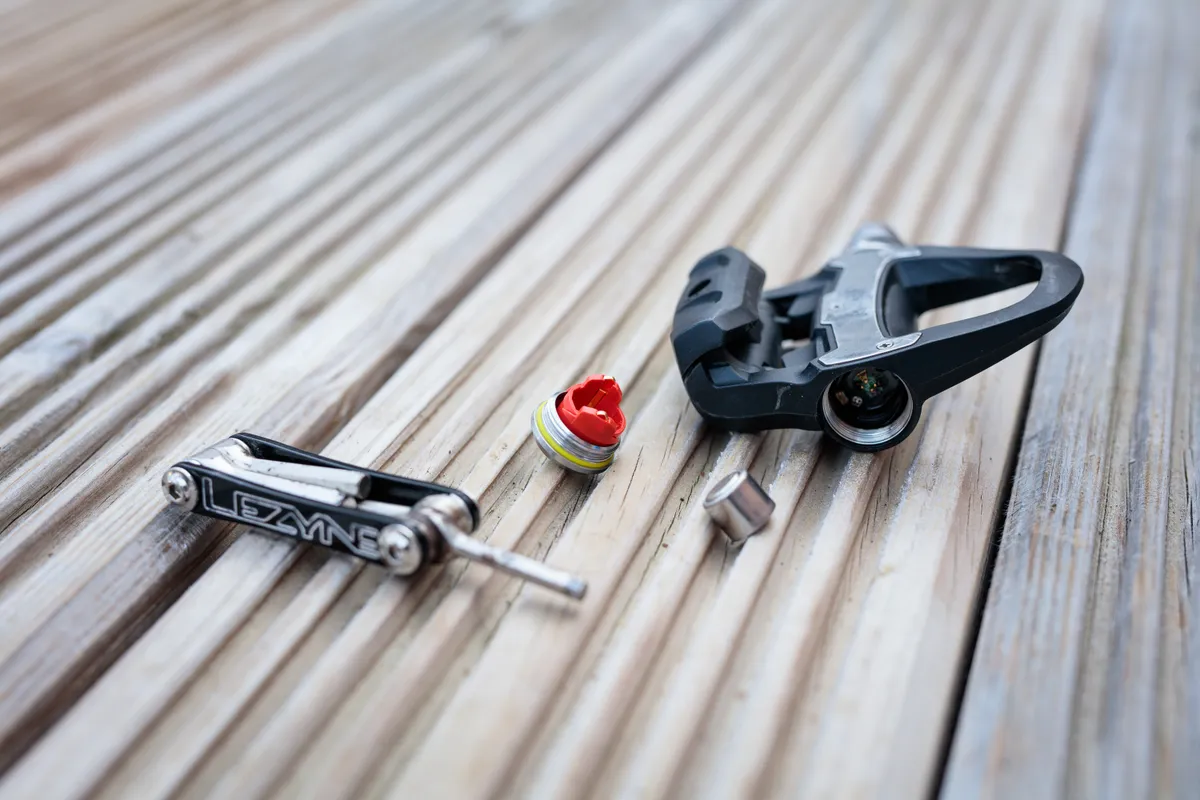
The ability to replace worn-out batteries with fresh ones on demand (providing you have spares available) means you’re not tied to needing charging cables and a mains point or portable power bank, for example.
If you can’t get hold of CR1/3N batteries, for whatever reason, Garmin says you can also use four LR44/SR44 batteries (two in each pedal) instead.
On the other hand, removable battery doors can be a weak point for water ingress and tolerance issues because they rely on the user opening and replacing the door correctly every time.
The removable parts are also naturally subject to some wear and tear, but Garmin has smartly specced the battery door with a 4mm Allen key hole. This should mean the hole is less likely to round out than on the 2mm bolts found on battery doors of power meters like the Verve InfoCrank.
In any case, the battery doors are available as a spare part, should they get damaged.
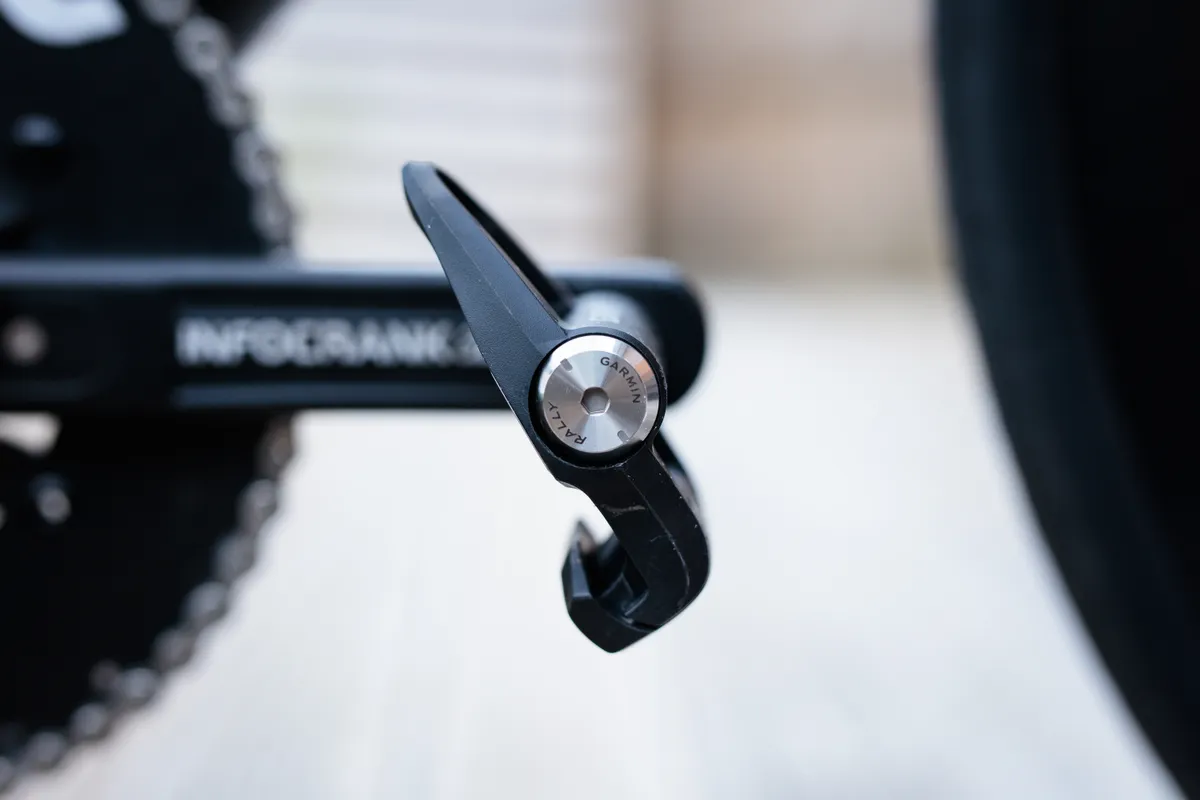
It’s worth noting a minority of Vector 3 users did experience issues with the battery doors, but Garmin is confident those problems have all now been completely resolved – and my experience with both a recent set of the Vectors and now the Rallys appears to confirm that is indeed the case.
In reality, both battery systems have strengths and weaknesses, so which is better will likely come down to personal preference.
Garmin claims the Rally RS200 pedals have a battery life of 120 hours – more than double the 50-hour battery life of Favero's Assioma Duos, which use a rechargeable battery – and after many hours of testing I’m yet to get even a hint of a low battery warning, so I don’t have any issues there.
My test set weighed spot-on the 320g claimed weight. That’s 15g heavier than the Favero Assioma Duos, but in reality that is absolutely meaningless to anyone but the most devout of weight weenies. Garmin claims the Look Keo compatible RK200 pedals weigh 326g per set.

My colleague Tom Marvin has been testing a set of the Shimano SPD compatible Rally XC200 pedals, and confirmed his set weighs 446g, just 2g over the claimed weight.
Pairing the pedals with a Garmin head unit or Zwift is quick, easy and reliable, and I haven’t experienced any data dropouts. It’s great that Garmin Edge computers can automatically download firmware updates for the pedals too, when connected to a smartphone via Garmin Connect.
Garmin Rally conversion kits
At the time of writing, Garmin unfortunately hasn’t been able to supply a conversion kit for me to test, so I haven’t had a chance to change a pedal body myself yet.
Garmin did give us a demonstration online, though, and it looks very simple to do, providing you have the right tools.
The process is essentially the same as overhauling a set of Vector 3 pedals, instructions for which can be found on Garmin’s support page.
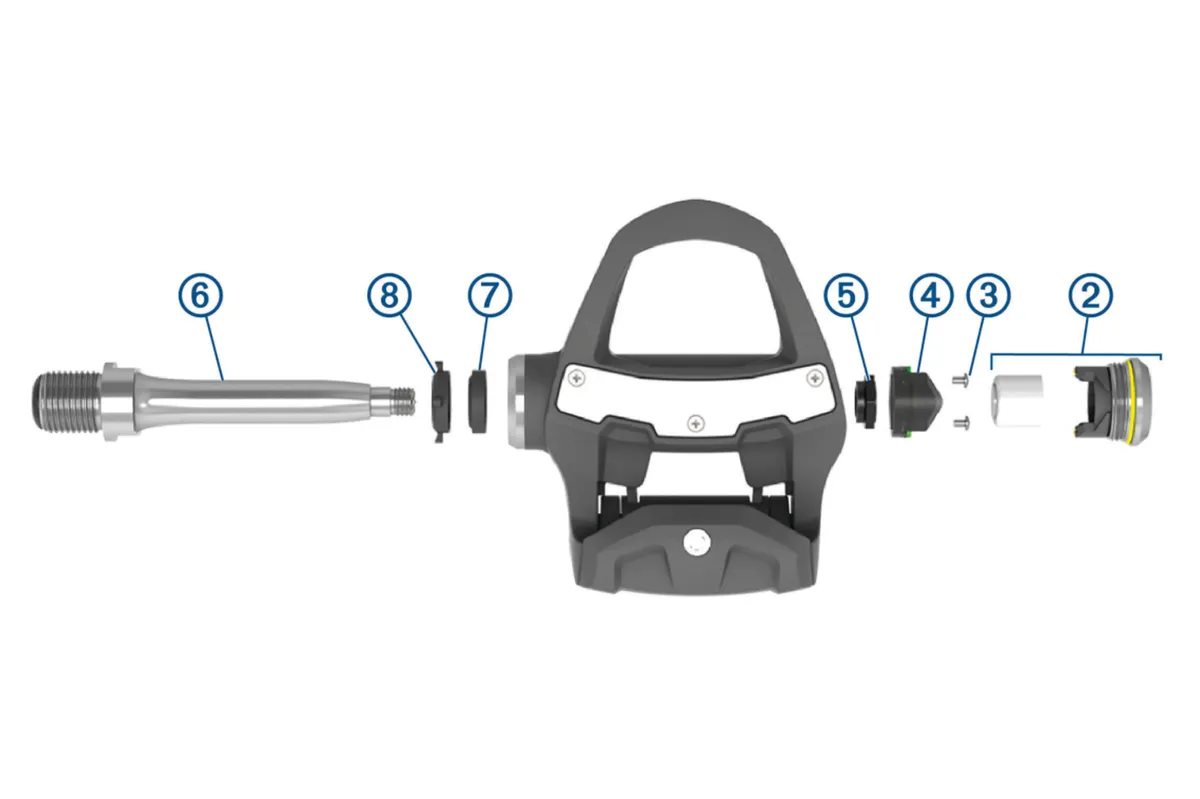
In the demonstration, it took a Garmin engineer less than five minutes to swap a pedal on a spindle, so you’re looking at around 10 to 15 minutes to do a set of pedals at home.
We’ve added footage of Garmin’s training demonstration to our video review of the Rally RS200 power meter pedals.
In terms of tools, they aren’t necessarily items every cyclist will already own (I don’t own all of them), but there’s nothing wildly unusual or expensive needed either.
The full list of tools required to swap a pedal body is:
- 4mm Allen key
- PH00 screwdriver
- 12mm socket wrench with an outer diameter less than 17mm (in order to fit inside the pedal body)
- 15mm pedal wrench
- Torque wrench with 12mm socket head (the spindle nut should be tightened to 10Nm)
- Grease
If I can get hold of a conversion kit post-launch, I’ll update this review with my experiences on how easy doing the swap is (or isn’t) and whether swapping the pedal bodies has any effect on the accuracy of the power data.
In terms of SPD pedal body performance itself, as mentioned previously, my wonderful colleague Tom Marvin has been using a set of the off-road Rally XC200 pedals, and says they perform very similarly to a standard Shimano SPD pedal, with practically identical cleat feel and a good range of tension adjustment.
He did note, though, that the XC pedal body is, at 27mm excluding the clipping in mechanism, fairly deep. This means ground clearance is potentially reduced a bit compared to a Shimano XTR Race pedal, which measures 17mm deep.
Power data accuracy
Garmin claims the Rally RS200 power meter pedals are accurate to within +/- 1 per cent. I can’t verify that exact claim, but – after some initial teething issues – my testing suggests the Garmin Rally power meter pedals produce accurate and reliable data.
My experience with Garmin’s previous power meter pedal, the Vector 3, has been very positive, with my set consistently providing data that matched up to other power meters.
However, my experience with the Rally pedals was less positive at first, with larger gaps than expected between the data from the Rally pedals and my benchmark power meters: a Verve InfoCrank, an FSA Powerbox Alloy and an Elite Direto XR smart trainer.
For reference, my Vector 3 and Favero Assioma Duo power meter pedals typically match up very well against these data sources.

After contacting Garmin with my findings, it transpired a firmware update for the pedals was available which, because the pedals hadn’t been officially released yet, I wasn’t able to download through the normal process (using a Garmin Edge computer).
Since performing that update the data has markedly improved. The Rally pedals now track my benchmark power meters and smart trainer closely across sprints, sustained power intervals and over the course of long rides.
For clarity, the new firmware was software version 2.30 – I had been testing on software version 1.37, which was the version installed when the pedals arrived with me for testing.
Though I’ve only been testing on this latest firmware for a week or so now, it looks as if the accuracy problems I experienced in the early stages of testing have been resolved.
One small quirk I did notice is that the initial pick-up from the pedals can be quite slow, and typically takes a few seconds for the pedals to start transmitting data once you start pedalling. It doesn’t appear to happen after coasting or freewheeling, just when starting from a complete stop.
This is something I’ve also noticed happening with Garmin Vector 3 and Favero Assioma Duo power meter pedals (I didn’t note this in my review of the Assioma Duo pedals because it’s only something I’ve noticed very recently).
Crank- or spider-based power meters I’ve used, like the Verve InfoCrank and FSA Powerbox, start reading more instantaneously.

This won’t be of concern to the vast majority of cyclists, but racers who take part in short duration events where every second counts and standing starts are commonplace (e.g. track or hill climb racing) may wish to take it into consideration.
Garmin Rally RS200 power meter pedals verdict
Garmin’s latest iteration of its power meter pedal is in many senses a genuine class leader.
The Rally pedal system offers best-in-class cleat compatibility, is competitive on the scales, looks great and performs very well. It’s also incredibly easy to install and swap between bikes.
Unless you have specific needs to record the first few seconds of your rides in minute detail, the data accuracy is consistent and reliable enough to train and race with.
The only downside likely to affect most people is the dual-sided version coming at a premium compared to its closest competitor (the Favero Assioma Duo), especially once you factor in the cost of a conversion kit to enable, for example, SPD (off-road) compatibility.
That price isn’t out of step with other high-end, dual-sided power meter options on the market though, and it could be worth it for those who value SPD-SL and SPD cleat compatibility.
How we tested
I put seven of the latest power meters head-to-head to find out which is worth your hard-earned cash.
As well as testing the accuracy and reliability of the data on each unit, consideration was given to ease of installation, indoor versus outdoor use, firmware, power calculations, drivetrain compatibility, warranties, compatibility with external units such as bicycle computers, and any other additional features.
Each power meter was tested indoors on a smart trainer and outdoors in all weathers. To assess accuracy, captured power data was compared against data from trusted benchmark power meters recording simultaneously across multiple bicycle computers.
Also on test
Product
| Brand | Garmin |
| Price | €1099.99, £969.99, $1099.99 |
| Weight | 320g |
Features
| Cleat type | spd_sl |
| Power meter type | pedal |
| Connectivity | antPlus |
| Connectivity | bluetooth |
| Battery | 2x CR1/3N or 4x LR44/SR44 |
| Battery life | 120 hours |
| Claimed accuracy | +/- 1 per cent |
| Water resistance | IPX7 |

